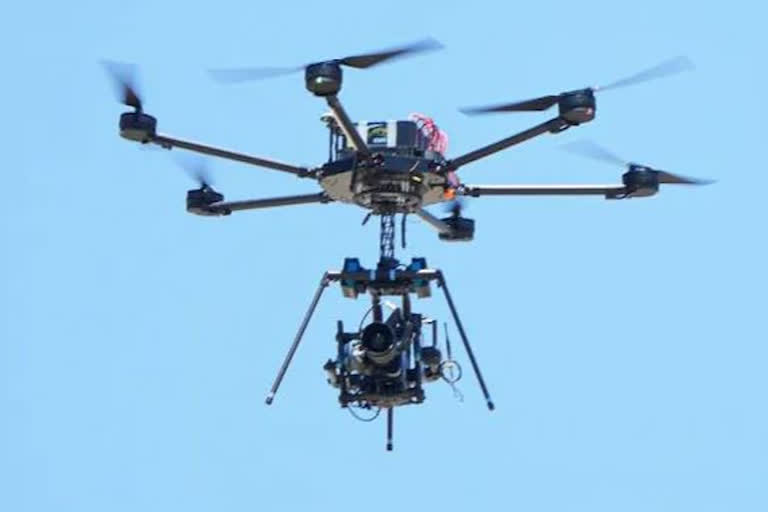New Delhi: As the Aviation Minister Jyotiraditya Scindia on Thursday said that just like taxis on the road, air taxi operations will be possible in the coming days under the new drone policy, industry experts believe that the whole framework is dedicated to bring in positive and progressive change in the aviation industry although it's still a long way to go in the sphere, this kind of framework is what incentivizes the investors to look at the country as a potential hub for innovation.
"Air taxis are being researched globally... and any startups are coming up. The time is not far when like taxis that you see on roads, like Uner, etc., you will see taxis in the air under the new drain policy. I believe this is very possible," Civil Aviation Minister Jyotiraditya Scindia said in a press conference on Thursday adding that the Drone Rules 2021 are much more liberalised regime for unmanned aircraft systems than what existed previously.
The new rules increase maximum payload for drones from 300 kg to 500 kg which shall pave the way for heavy payload-carrying and drone taxis making India future ready. As per the Drone Rules 2021, special drone corridors shall be developed for cargo deliveries.
"Drones can be employed to gain time and cost-effective solutions in respective sectors, given the traffic we have on land. The increase in the inclusive weight helps multiple sectors the first use being of the drone taxis, which shall aid the industry that of healthcare, eCommerce, agriculture, food delivery, etc. Delivery of medicines, food, is facilitated," said Kunal Kislay, the co-founder of Integration Wizards Solutions.
"Important relief measures such as monitoring of a disaster and deploying first-aid can be tackled at once. The agriculture sector too is yet to explore the various ways in which drones can see their daily activities. Gradually, while learning on the go, we shall touch on newer aspects of how drone/done taxis can intervene in our work efficiently," he added.
Read: Scindia hails new drone policy, hints at global drone hub by 2030
Kazim Rizvi, founder of the policy think tank The Dialogue, said this Framework has been developed keeping in mind the potential technological advancements in the future. The whole framework is dedicated towards bringing in positive and progressive change in the aviation industry. The statement by the Aviation Minister saying that air taxis are possible under the framework very much speaks to the fact that India is looking at the future to develop state-of-the-art technology in the sector.
"This is a forward looking approach to keep the options open. Though it's still a long way to go in this sphere, this kind of framework is what incentivises the investors to look at the country as a potential hub for innovation," Kazim Rizvi added.
Speaking on the anti-drone technology system after the liberalised Drone Rules,! 2021 that comes into force from 26 August midnight, Kunal Kisla, said, "The Drone policy as a whole gives the underlying sense of security while also giving freedom to commercial players. The attacks or any other mishaps shall be controlled with a unified system of anti-drone tech, state-specific set of rules and demarcation of strict red and yellow zones. For now, the rules only cover the penalties that might go up to Rs 1 lakh. The anti-drone technology and its intervention in the Drone Rules are not laid yet. However, sharing the role it might play in case of any discrepancy will make the operators more responsible."
